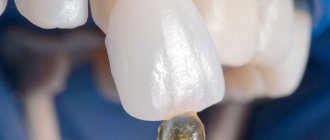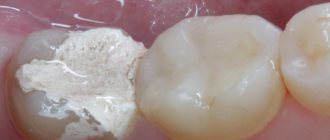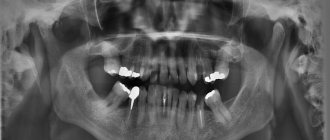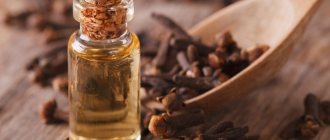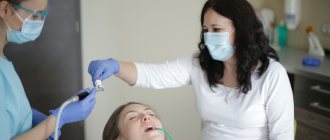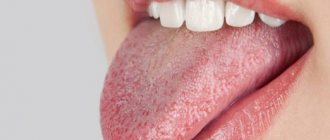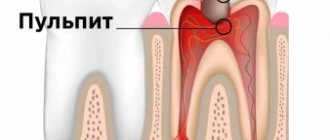Soft plaque that is not removed in time turns into stone over time.
Plaque forms constantly in the oral cavity, since the process of microflora reproduction does not stop (its intensity especially increases after eating). If soft deposits are not removed, they gradually become saturated with mineralized salts contained in saliva and harden (on average, mineralization occurs within 16 hours after eating, but this figure may vary slightly, both smaller and larger).
Why does tartar form?
The appearance of tartar can occur for a number of reasons:
- Poor oral hygiene. First of all, you need to choose the right toothbrush - it should have bristles of different lengths and shapes. It is equally important to use a toothpaste that can effectively cope with plaque – it must have an abrasiveness index of at least 50 RDA.
- Unbalanced diet. Foods high in carbohydrates – flour, pasta, carbonated sweet water, etc. – provoke stone formation.
- Drinking strong black tea and smoking regularly. The latter is especially dangerous, since heated smoke intensifies the inflammatory process in the gums.
- Violation of pH levels. When it decreases, the acidity of saliva increases, as a result of which more minerals and salts are deposited on the surface of the teeth. If the level, on the contrary, increases, the acidity of saliva decreases, which affects the enamel, which becomes more loose.
- High content of fluoride and calcium in saliva. The ions of these components accelerate the formation of tartar.
- Uneven bite. The distance between crowns is a good place for plaque to accumulate.
- Orthopedic fixed structures in the mouth (plaque accumulates in the gaps between dentures and stones form).
- Thyroid diseases and diabetes. These diseases are accompanied by disruption of endocrine processes, which leads to changes in the acidity of saliva.
- The absence of several teeth, which affects chewing. If a person has no teeth on one side, he spontaneously begins to chew on the other side of his mouth. As a result, teeth do not undergo the natural self-cleaning procedure, so plaque accumulates on them.
- Too increased or, conversely, decreased production of saliva due to disturbances in the functioning of the salivary glands.
- The use of medications that affect the composition of saliva.
Fungi on the skin
On the body, fungal infections can develop anywhere: on the head, feet, buttocks or palms.
The most common forms are:
- Dermatophytosis: damage to the deep layers of the skin, which is caused by both yeast and mold fungi.
The most common fungal disease. This infection triggers an inflammatory process and leads to the formation of pink or red spots or plaques. The size of such plaques is very diverse. Fungi that cause dermatophytosis are permanent residents of hair and skin. They are able to perfectly absorb and assimilate keratin from hair and nails. - Keratomycosis: a disease that affects the top layer of skin. Symptoms of the disease are small, hard nodules on the skin that are filled with pus. The forms of the disease vary and include pityriasis versicolor, axillary trichomycosis and erythrasma.
- Deep mycosis: the disease affects the subcutaneous tissue, muscles, joints and bones, mucous membrane, tissues of internal organs and parts of the nervous system. With such a lesion, warts and deep fistulas appear on the skin.
- Candidiasis: The infection is caused by yeast. The most common sites of lesions on the body are in the groin area, in the armpits and under the female breast.
The manifestation of the disease depends on the location of the lesion and the type of fungus.
Candida and dermatophytes cause itching, discoloration of the skin to red-bluish, peeling of infected areas, dandruff and dry hair, and discoloration of nails.
With mycosis of the foot, in addition to peeling of the skin, blisters up to 2 mm in diameter appear, filled with liquid. These bubbles collect between the toes. The smell that appears when the fungus decays also causes trouble for the patient. Often a person gets such diseases in a sauna or in the summer, when wearing tight shoes for many hours.
When fungi get on the skin of the face, they first attack dead epithelial cells. If treatment is not carried out, the skin begins to peel, become rough, and red or yellow spots appear. During the transition to the severe stage, purulent foci and ulcers appear. Fungal infections of internal organs begin.
On the head, fungal infections lead to hair loss, flaking, dandruff, and the formation of bald patches.
Types of tartar
Tartar consists of one third of organic substances (epithelial cells, microorganisms, proteins, etc.) and 2/3 of inorganic substances (mainly calcium salts).
Stones are divided into:
- supragingival, which, as you can guess from their designation, are located above the gum. They are easy to see with the naked eye and are dark yellow in color. Removing such deposits is quite simple.
- subgingival. During a routine examination, they cannot be noticed, but their presence can be assumed by the bluish tint of the gums and increased bleeding in this place. It is possible that pus may be released from the periodontal pocket.
The presence of subgingival stones is the first sign of periodontitis and the beginning of tissue destruction around the tooth. Only a dentist can detect stones located under the gum by probing the pockets. Removing subgingival stones takes a lot of time, so not every doctor will undertake such work.
Tooth structure
The tooth is divided into two main parts : the crown , which rises above the gum, and the root , located in the periodontal canal. Between the tooth and the bone there is a layer of soft tissue called periodontium.
The hard frame is dentin . In the upper part it is covered with a thick cover made of hard enamel. On the surface of the chewing teeth there are depressions - fissures . Dentin in the cervical and root areas is surrounded by cement.
Inside the dentin there is a root canal filled with pulp, which contains blood vessels and nerves that exit the root through the apical foramina. They are connected to the neurovascular bundle. The main bundle connects to the circulatory and nervous system of the body.
Tartar: causes of appearance
Leftover food in the mouth after eating is a favorite treat for bacteria. Such microorganisms especially love the so-called “fast” carbohydrates, found in large quantities in flour products and sugar. It has been proven that even if oral hygiene is neglected one day, this will lead to accelerated plaque formation, increasing in volume several times over this period of time.
Bacteria need nutrients both to maintain vital processes and to produce enzymes that allow them to securely attach to the tooth surface. If you brush your teeth poorly, individual bacteria will begin to form colonies, which, in turn, can also merge with each other. Nevertheless, at this stage, eliminating plaque is not yet particularly difficult - you can get rid of it by working well with a toothbrush.
Over time, the plaque will mineralize (calcium salts and proteins present in saliva will begin to settle on the surface of the bacteria, which will proceed in parallel with the formation of new colonies), hardening and increasing in volume.
At the same time, toxins will be released from the plaque, causing the development of the inflammatory process. You can understand that inflammation has begun by pain in the gums, their bleeding during brushing, the flow of pus and increased tooth mobility.
The inflammatory process is of great importance for bacteria: the groove between the gum and tooth constantly receives liquid rich in proteins necessary for bacteria to grow; inflammation increases the formation of this fluid, accordingly, microorganisms receive more proteins, and the growth rate of their colonies becomes higher.
Concluding all of the above, the appearance of a stone is a direct consequence of non-compliance with hygiene.
How to remove tartar
If the plaque has formed into stone, then it will no longer be possible to get rid of it with an ordinary brush.
Tartar cleaning in Krasnodar is the only effective way to eliminate deposits. The professional method involves the use of ultrasonic cleaning: removing tartar from all teeth takes about one hour, if we are talking about supragingival deposits. To eliminate subgingival stone, you will have to visit the doctor several times, if his qualifications are sufficient to carry out the procedure.
It is better to immediately contact a periodontist rather than a therapist. This is especially true for people suffering from periodontitis, since they may have stones in the resulting pockets. If it is necessary to clean tartar located above the gum level, then a dentist-therapist will also help.
The cost of tartar removal in our clinic is 3,500 rubles. This includes polishing the teeth with a brush and toothpaste. Polishing teeth using a PROPHY flex device (a mixture of water, compressed air and fine sodium bicarbonate powder - baking soda).
General information about microbes
These tiny organisms get their name from the abbreviation “microscopic object.” It was proposed back in 1878 by the French Emile Littre and Charles Sedilot.
Billions of such small organisms inhabit the air, the earth's surface and water everywhere. They are also found in human, animal and plant organisms. The first time microbes were seen was by the Dutch optician Antonio Leeuwenhoek, looking at a drop of ordinary water through a magnifying glass.
Microbes are the most ancient inhabitants of the planet. Their earthly history is more than 3.5 billion years. And for the first billion years they were the only living organisms on Earth. In the human body, the ratio of microbes and our own cells is 50/50. Most microorganisms benefit the body.
The 2 largest groups of microbes are nuclear-free prokaryotes and eukaryotes, which contain a nucleus in their cells.
The total number of microbes inhabiting the Earth and their ubiquitous distribution make them the most important link in maintaining the balance of the earth's biosphere.
Microbes vary in shape:
| Microbes | Form |
| Staphylococcus or streptococcus | Round cocci |
| Spirochetes | Spiral-shaped organisms |
| bacilli | Similar to sticks |
| Bifidobacteria | They live in fermented milk products and look like a two-toothed saw. |
There are also multifaceted microbes in the shape of stars, triangles and polyhedra. Some microbes are immobile, but mostly these microorganisms have flagella and are capable of movement.
The following classification:
- bacteria;
- the simplest single-celled organisms, for example amoebas;
- microscopic fungi.
Tartar: how to get rid of it at home
Most people understand that the best way to resolve any dental problems is to visit the dentist. However, not everyone likes to contact a specialist, delaying the visit until the last minute in the hope that the problem will somehow resolve itself. This is largely facilitated by advertising offering treatment for all occasions.
So how to remove tartar at home? Unfortunately, no way. Even the most expensive products will not be able to remove thick plaque and stone. However, ultrasonic or electric brushes, as well as special toothpastes, will help get rid of the soft plaque that is just beginning to form.
Microbes that live under your nails
The area under the nails contains all types of bacteria that live on the hands. But the concentration of such microbes is hundreds of times higher. This is due to the inaccessibility of the space under the nails for treatment with disinfectants and anti-inflammatory agents.
Interestingly, there are many times more such microbes under artificial false nails than under natural ones.
Permanent residents of the body inhabiting this zone:
- fungal bacteria;
- staphylococci,
- streptococci.
The difficulty of disinfecting fingers is that the nail plate reliably protects this part of the body from the action of the most effective antibacterial agents.
Consequences of stones
If the stones are not removed, this can lead to:
- the appearance of bad breath (its cause is the vital activity of microorganisms that have settled on the surface of the teeth);
- the formation of caries (bacteria in the process of life produce hydrochloric acid, which corrodes the enamel, which contributes to the onset of decay);
- inflammation of the gums, their bleeding, which can subsequently result in periodontitis;
- diseases of the mucous membrane (accumulation of colonies of microbes on the teeth can lead to ulcers and erosions);
- worsening of existing diseases (diabetes, heart disease, etc.).
Microbes on your hands: what they look like under a microscope
It is recommended to show photos of microbes under a microscope to children who forget to wash their hands. This photograph of the palm of her 8-year-old son was taken by Californian microbiologist Tasha Sturm, who works at Cabrillo College.
Microbes under a microscope (the photograph reflects them in huge quantities) exist even in a healthy child. The baby whose hand is in the photo only played a little in the house and with the dog.
Photo of a child's palm covered in germs:
The transcript of the photo is as follows:
- white colonies of microbes around the fingertips - staphylococci;
- micrococci are marked in yellow;
- Colonies colored pink are serratia.
Staphylococci and micrococci are often harmless and are part of the natural microflora of humans. Serratia, on the contrary, can cause infections, especially in weakened people.
On the hands, in addition to the already mentioned streptococcus, staphylococcus and fungal bacteria, you can find the following microbes:
- salmonella, which have the shape of rods up to 7 microns in length and cause intestinal infections, including severe typhoid fever;
- Escherichia coli measuring 0.4-0.8 × 1-3 microns, sometimes leading to death in elderly people and small children due to general poisoning of the body;
- Shigella, which causes dysentery and seizures in children;
- spheroid-shaped brucellae without flagella that infect internal organs.
How to remove tartar
There are the following methods for removing tartar:
- manual;
- using ultrasound;
- using laser;
- sandblasting;
- chemical method.
Each of these methods has its pros and cons.
The mechanical or manual method is the oldest method of removing tartar in Krasnodar, so it is used extremely rarely. Cleaning is carried out either manually (the doctor uses special tools to remove stones) or using a drill with special attachments. Its advantages include low cost and versatility, but its disadvantages are that it is traumatic for the gums and a long recovery period.
Ultrasound is a more modern and effective method. Special devices called scalers are used for it: they can emit ultrasonic vibrations with a frequency of up to 50 kHz. The impact of scalers can be mechanical (vibrations are transmitted to the attachments that act on the teeth) or by the cavitation method (during operation, an antiseptic solution is supplied, in which bubbles are formed under the influence of ultrasonic waves, exploding at the moment of contact with the surface of the teeth, which leads to the destruction of stones) . Unlike the previous method, scalers do not injure teeth and gums, and their use is completely painless for the patient. However, there are contraindications: for example, the presence of braces prohibits the use of the method.
Cleaning tartar using sandblasting involves removing deposits with a mixture of water, air and abrasive. The method is characterized by the absence of trauma, after its use the teeth can become several shades lighter, and the presence of braces is not an obstacle. However, sandblasting cannot get rid of large deposits, and during the procedure, the taste of soda is clearly felt in the mouth, which can be unpleasant for the patient.
Laser cleaning is an innovative method that is less traumatic. The teeth are treated with a laser beam, which evaporates the liquid from the deposits, resulting in their destruction. There is no damage to the enamel. The method is quite expensive: perhaps that is why it is not very widespread. In addition, there are many contraindications for its use.
A chemical method is used to soften particularly large deposits. A special product is applied to the stone, which makes it loose, after which the deposit is removed using any of the above methods. In order not to damage the gums, before the start of the event they are treated with a rubber dam - a product that protects against burns. Among the advantages, it is worth highlighting the possibility of removing old deposits and safety for fillings. The disadvantages are the impossibility of using it as the only method, the impossibility of removing subgingival deposits with its help, and the prohibition of use for gingivitis.
It is worth understanding that it will not be possible to get rid of tartar at home: even the most modern and expensive toothpaste from tartar can only remove soft plaque that has a loose structure, but if the hardening process of the deposits has already completed, you can only get rid of them in the hospital.
Preventive measures
The best method of prevention is careful hygiene. Basic rules that should be followed to prevent the formation of stones and other problems with teeth are as follows:
- Teeth must be brushed after every meal;
- Before using the paste, you should use dental floss, since the brush cannot penetrate into all the spaces between the teeth;
- If you can't floss outside the home, you can chew chewing gum.
